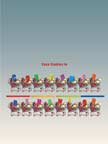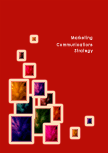Consumers Behavior
 |
Details
Chapter Code: CBC09
Textbook:
210 X 275 mm approx.
Short Case Studies
Detail Table of Contents
Workbook:
Pages : 304; Paperback;
210 X 275 mm approx
Pricing
Textbook Price: Rs. 750;
Workbook Price: Rs. 700;
Shipping & Handling Charges: Rs. 50 per book;
Books Available only in INDIA
Chapter Price : Rs. 100
To download this chapter in electronic format, click on the button below,
and select the chapter from the list of available chapters.
Buy Now
To order the entire book click on the button below, and select the book from
the list of available books:
Please allow 5 to 10 days for delivery of the
Book.
Consumer Behavior : Chapter 9
SUMMARY:
A family comprises two or more individuals, related by blood, marriage, or adoption, staying together. There are primarily three types of family structures - married couple, nuclear family (married couple with children), and extended family (married couple with children and their grandparents). In recent times, various new kinds of family structures have emerged, like single-parent households, same sex households, voluntary childless couples, and unmarried couples. Pets, like cats and dogs, have also become a part of the family and in some countries, are treated as companions who can also be beneficiaries to guardian's (owner's) property.
|
|
Consumer socialization is one of the most important functions of the family and comprises processes through which people, especially children, acquire skills, knowledge, and attitudes, relevant to their functioning in the marketplace.
This process is generally initiated by family, but media and friends are also the influencing factors. The family lifecycle provides an important segmentation tool to marketers based on its stages. The traditional family lifecycle stages are - bachelorhood, honeymooners, parenthood, postparenthood, and dissolution. The knowledge of family decision-making is important for marketers to understand various family segments and their purchase motivations.
There are four phases in the family purchase process - problem or need recognition, information search and evaluation of alternatives, final decision to purchase, and post-purchase behavior. There are five major roles in the purchase process - initiator, influencer, decider, buyer, and user. Household decision-making has three important players - husband, wife, and children. Certain stereotypes have been set, which help to determine whether the decisions are taken by the husband or by the wife.
Broadly there are four types of family decisions - husband-dominated, wife-dominated, completely autonomous decisions by either husband or wife, and joint decisions. In today's fast changing world, there has been a shift in economic, social, and cultural environments of countries, leading to a shift or, sometimes, complete reversal of the traditional husband-wife role, i.e., the wife is the bread earner and the husband, the child rearer.
The role of children as decision-makers has also changed. They are not only direct purchasers but also quite influential indirect purchasers, with the span of their influence ranging from items directly consumed by them to a large number of household purchase decisions. They also comprise a lucrative future market, which marketers are trying hard to capture in the present.



